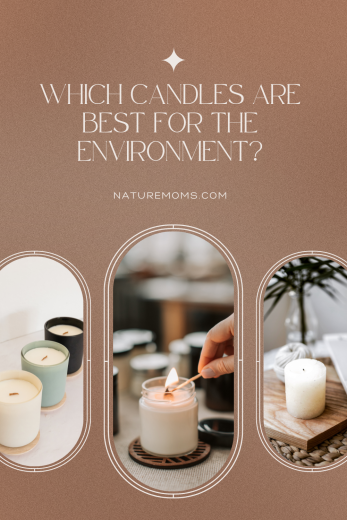 Candles are extremely popular due to their ambient lighting and delicious aromas. However, there is the question of whether or not candles are bad for the environment.
Candles are extremely popular due to their ambient lighting and delicious aromas. However, there is the question of whether or not candles are bad for the environment.
If you’re worried about the environment and want to live a healthier life, but love candles, you may be concerned about their effects on global warming and pollution. The impact of a candle on the environment largely depends on its material composition, although no candle has a carbon footprint anywhere near the equivalent of a car or house.
In this article, we’re going to discuss the different types of candles, which are best for the environment, and why this is the case.
The Different Types of Candles
Most modern-day candles are made out of paraffin, soy wax, or beeswax. The former tends to be cheaper but is the least environmentally friendly.
Paraffin candles are produced from a component of crude oil (paraffin). For this reason, the production of paraffin candles requires fossil fuels.
Unscented and scented soy candles comprise soy-based wax that is free from crude oils and animal products. They are often combined with coconut wax, which has a lower melting point than soy wax, enabling the candle to burn more easily.
Beeswax candles are usually the most expensive option, and they contain natural beeswax. They tend to be harder to add pigments and scents too, so they tend to be unscented and plain in color
Which Candles Are the Best and Worst for the Environment?
If you’re environmentally conscious but still want to create a warm and cozy atmosphere in your home, you’re probably wondering which types of candles are the most sustainable and non-toxic.
Paraffin wax candles are the least environmentally friendly and are unsustainable because they require the extraction of crude oil and non-renewable energy sources.
Scented paraffin wax candles contain a lot of synthetic chemicals to produce various aromas. These chemicals are released into the air when you burn them, potentially causing skin and eye irritation, and exacerbating pre-existing respiratory conditions.
Soy wax candles, on the other hand, burn with a much cleaner flame and produce less soot than their paraffin wax counterparts. They are produced from vegetable oil and soy, which carries some environmental implications.
However, soy candles are still more sustainable and environmentally friendly than those made using paraffin. Plus, soy wax is often mixed with coconut oil to lower the melting point, which makes it even more sustainable.
Beeswax is another sustainable type of natural wax candle. Although more expensive than paraffin or soy wax candles, beeswax candles burn with a clean flame and produce no soot. Purchasing beeswax candles also enables you to support local bee farmers.
The candle wick is also important when considering the sustainability and eco-friendliness of a candle. Cotton wicks are the most commonly used type of candle wick. They are often coated in paraffin wax or similar chemicals to make them burn more easily, and these chemicals are released into the air when set alight.
Wooden wicks burn with cleaner flames and produce fewer air pollutants, so they’re a better choice for the environment.




